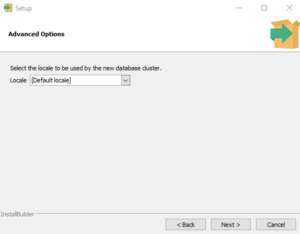

- #Postgresql tutorial data file how to#
- #Postgresql tutorial data file serial#
- #Postgresql tutorial data file software#
- #Postgresql tutorial data file code#
- #Postgresql tutorial data file password#
INSERT INTO merchants (name, email) VALUES ('john', ' ') To insert new data into a table, use the INSERT keyword followed by the table name, column name(s), and values. To retrieve all columns in the table, you can simply use SELECT *. To retrieve data from a table, use the SELECT key, followed by the name of the columns you want to retrieve and the name of the table. Let’s explore four basic example of SQL queries you can use. Postgres is an SQL-based system, which means you need to use SQL language to store and manipulate its data. Now have a table into which you can insert data. You might see more rows or less, but as long as you have the database and the table you created previously, your table should look like this: my_database=> \list If you’d like to check the created database and table, you can use the command \list and \dt, respectively. One database can have multiple tables, but we’ll be fine with one table for this tutorial.
#Postgresql tutorial data file serial#
CREATE TABLE merchants( id SERIAL PRIMARY KEY, name VARCHAR(30), email VARCHAR(30) ) Now that you have a database, let’s create a simple table where you can record your data. According to the Postgres documentation, “superuser status is dangerous and should be used only when really needed.”Īn SQL-based database stores data inside a table. You might be wondering, why can’t we just use the default postgres user to create the database? That’s because the default user is a superuser, which means it has access to everything within the database.

Now that you’re back inside, create a new database named my_database. Log out from your postgres superuser and log in as my_user using the command \q. Now that you have one, give it permission to create databases by issuing the ALTER ROLE CREATEDB syntax.
#Postgresql tutorial data file password#
Once you’re logged in, create a new user by adding a login permission with the password “root.” CREATE ROLE my_user WITH LOGIN PASSWORD 'root' Ī user is simply a role that has login permission. You will be asked to input your password. If the terminal replies that the psql command is not found, you’ll most likely need to add the Postgres bin/ and lib/ directories into your system path. To access PostgreSQL from the terminal, use the command psql with the option -d to select the database you want to access and -U to select the user. To better understand SQL language, we need to create a database and table from the terminal. Below is the overview of a newly installed PostgreSQL database. Once opened, pgAdmin will ask for your password to log in. Once the installation is complete, you can access your database by using pgAdmin, a graphical interface tool database management that is installed automatically with PostgreSQL. Make sure you remember this password you’ll need it to login later. The setup wizard will prompt you to enter a superuser password. It supports all major operating systems, so choose the right one for your computer and follow the instructions to set up the database. Start by downloading and installing PosgreSQL. It has been maintained since 1996 and has a reputation for being reliable and robust. PostgreSQL, or Postgres, is a relational database management system that claims to be the world’s most advanced open-source relational database.
#Postgresql tutorial data file code#
I published a GitHub repo for this tutorial so you can compare your code if you get stuck. Instead, we’ll focus on showing how requests from the interface are recorded into a database.
#Postgresql tutorial data file how to#
We won’t cover how to validate data before interacting with the database. I’ll assume that you understand how a React application works and are familiar with frontend JavaScript HTTP requests. We’ll then create a simple React app to test and see how the entire application flows from front to back. In this tutorial, we’ll demonstrate how to create a small application using Express and Node.js that can record and remove information from a PostgreSQL database according to the HTTP requests it receives. Knowledge of both frontend and backend programming - as well as designing scalable systems and building solid application architecture - is a requirement to be a tech lead.You can be promoted to a full-stack developer and take on a bigger role with a higher salary.You’ll be able to work on both the front and back side of your app.You’ll stand out from other frontend developers because you’ll know how your application work as a whole.That said, there are plenty of good reasons for a frontend developer to learn about backend programming and database interaction. Getting started with Postgres in your React appįrontend developers typically don’t need to understand the process of receiving, recording, and removing information.
#Postgresql tutorial data file software#
Nathan Sebhastian Follow A senior software developer with experience in building fullstack JavaScript app with React and Express.


 0 kommentar(er)
0 kommentar(er)
